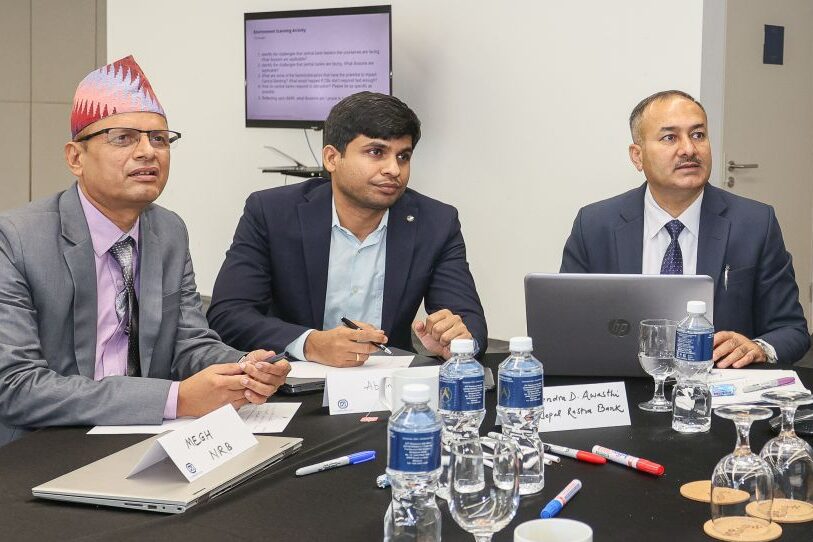Future-ready central banks
In the words of Christine Lagarde, ‘central banks must provide for stability in an age that is anything but stable’. Central bank leaders throughout the world are increasingly acknowledging that we are now living in the age of disruption and that one of our key priority areas must be ensuring our future readiness. But what does “future-ready” mean in central banking? My view is that being future-ready entails having the ability to face existing, known challenges while also developing the capacity to address future disruptions that could happen in the external environment – possible negative events that have sufficient potential to interrupt delivery of the central banking mandate of stability and security.
What is the role of leadership?
In the leadership courses that I have conducted through SEACEN, I have asked central bank leaders to identify the challenges that they are facing. Their answers: changing workforce demographics, the rise of financial products and services beyond the conventional definition of banking, digitalisation, inflation acceleration, the COVID-19 pandemic, climate change, talent shortages and persistent supply shocks. Major changes in the ecosystem that central banks play a key role in managing, in other words.

These changes on the outside necessitate changes on the inside of central banks. Central bank leaders agree about the importance of promoting a risk-smart culture. What is a risk-smart culture? Norms and behaviours exhibited throughout the institution that determine the collective ability to openly understand, identify and mitigate present and future risks. While risks come in different types, most of the discussions I had with these leaders revolved around behavioural risk, and its impact on employee engagement and overall productivity.
What is behavioural risk?
Behavioural risk refers to the potential for unfavourable risk consequences stemming from inappropriate or inadequate employee behaviours, influenced by underlying systemic cultural factors. Inadequate behavioural risk management translates into organisational ineffectiveness and inefficiency. Classic examples of risk-smart behaviours are effective listening, an ability to give and receive feedback, including everyone involved in delivering an initiative to have a say in the definition and development of the undertaking, and much more.
What gets in the way of risk-smart leadership?
In the book ‘Reinvention: Accelerating Results in the Age of Disruption‘, Cragun and Sweetman identified six metaphorical blindfolds that leaders and organisations tend to wear that prevent them seeing and acting on even clear and present risks:
- Arrogance: A display of overbearing superiority, self-importance and false pride. This impedes the ability to listen and learn.
- Resistance to negative feedback: The inability to entertain any negative input concerning projects, oneself or the organisation, fearing it might disrupt plans, deadlines or reputation. This inhibition to real conversation means no learning can take place, even about clear and present dangers.
- Dismissing competitors’ successes: In central banking, it may well equate to excessive confidence in past successes in a fast-changing ecosystem.
- “We know what’s best for the customer”: Failing to empathise with the various stakeholders we serve as central bankers – which is growing daily.
- Failure to acknowledge problems: Being either blind to organisational and individual issues or dismissing them to shield oneself and the company – viewing problems as inconveniences to be ignored rather than genuine issues to be resolved.
- Avoiding the unavoidable: Recognising impending threats but assuming they will resolve miraculously, avoiding necessary adjustments.
Do any of these apply to leaders in your central bank? To be honest, when we posed that question in our classes, we were mostly met with an embarrassed silence.
The way forward

To future-proof our central banks, leaders at all levels must continually assess whether they are wearing these blindfolds. Open discussions within our teams can pinpoint systemic inefficiencies due to unhealthy cultural practices that impede us from realising our mandate. Furthermore, open communication facilitates high-trust culture. According to a study published by Zak in the Harvard Business Review, people at high-trust companies report 74 per cent less stress, 106 per cent more energy at work, 50 per cent higher productivity, 13 per cent fewer sick days, 76 per cent more engagement, 29 per cent more satisfaction with their lives and 40 per cent less burnout than people at low-trust companies. It comes as no surprise that open communication results in the effective functioning of our organisation, precipitated by increased employee engagement.
Given the ever-increasing complexity of issues facing central banks, it is safe to say that the phrase “what worked well in the past” in terms of organisational behaviour, cultural expression and leadership behaviour will be increasingly obsolete. Central bank leaders must acknowledge that “the best idea or solution” might not generally come from the top. Rather, promoting a culture of continuous listening is an important step in future-proofing our organisations.
Donna Lumbo is a Senior Analyst in the Leadership, Governance, and Human Capital Pillar at the SEACEN Centre.

